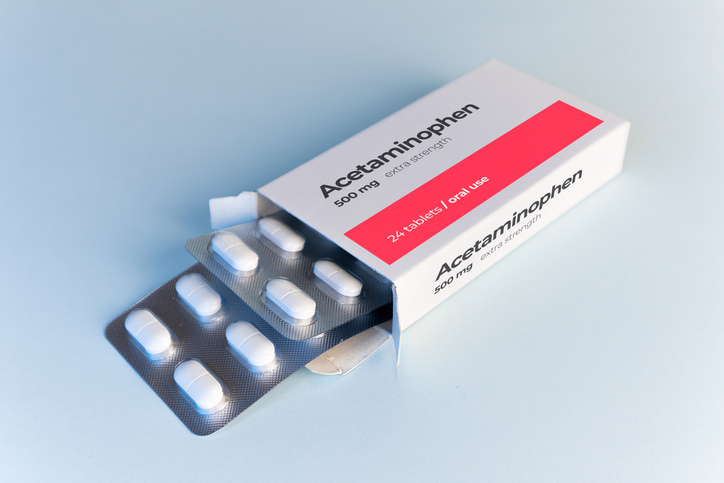
Here are the top stories recently covered by DocWire News in the Rheumatology section. In this edition, read about vitamin D in postoperative hip fracture patients, peficitinib use in rheumatoid arthritis, regional anesthesia to reduce opioid use in orthopedic surgery, and self-reporting hypermobility.
According to a new study, vitamin D intake may play a role in the chances of walking postoperatively after hip fracture surgery. Final analysis included 290 patients (mean age, 82 years; mean body mass index [BMI], 25 kg/m2; 73% of patients were female). Patients with higher 25-hydroxyvitamin D [25(OH)D] (25[OH]D) concentrations, compared to those in the <12 ng/L group, were more likely to walk at 30 days postoperatively: 12 to <20 ng/mL (adjusted odds ratio [OR]=2.61; 95% confidence interval [CI], 1.13 to 5.99); 20 to <30 ng/mL (aOR=3.48; 95% CI, 1.53 to 7.95); and ≥30 ng/mL (aOR=2.84; 95% CI, 1.12 to 7.20). Patients with higher 25(OH)D concentrations, compared to the deficiency group, also had greater 60-day mobility (P=0.028). A trend was observed in poor nutritional status—defined as GNRI <92—and reduced mobility at 30 days, but not 60 days.
Peficitinib was a safe and effective treatment option for patients with rheumatoid arthritis (AR) in a new study. The analysis included data from 853 patients through May 2018. Patients had a mean peficitinib duration exposure of 22.7 months. Two-thirds of patients’ maximum dose was 100 mg. At week zero of the extension study, American College of Rheumatology (ACR) 20/50/70 response rates were 71.6%, 52.1%, and 34.7%, respectively; at the end of treatment, the rates were 78.9%, 61.4%, and 42.7%, respectively. The researchers observed improvements in both ACR components and disease activity score in 28 joints based on C-reactive protein from baselines of the previous studies; improvements persisted throughout the extension study. A total of 757 patients (89.8%) reported treatment-emergent adverse events (TEAEs), most of which were severity grade 1/2; the most common were nasopharyngitis (39.7%) and herpes zoster (11.7%). Fifty-five patients (6.5%) sustained drug-related TEAEs that resulted in permanent study drug discontinuation.
A new study evaluated the effectiveness of regional anesthesia via continuous catheter infusions on opioid use in orthopedic surgery patients. Comparisons were made between patients who received general plus regional anesthesia (RA) versus general anesthesia alone (NORA), and postoperative pain needs in morphine equivalents (ME) were determined. Final analysis included 70 patients: 41 RA patients and 29 NORA patients. Demographics were similar between the two groups. During the 48-hour postoperative period, the RA group had lower mean opioid use (0.5 kg/kg ME) compared to the NORA group (1.7 mg/kg ME). In subgroup analyses, the researchers compared between-group outcomes for femoral lengthening and tibial-fibular lengthening procedures; “[both] lengthening procedures demonstrated the same opioid-sparing effect favoring the RA group compared to the NORA group,” the researchers observed. In the femoral lengthening patients, the RA group had a significantly shorter hospital length of stay (32 hours) than the NORA group (53 hours). However, length of stay did not significantly differ between the groups when assessing tibial-fibular lengthening procedures.
A study measured the validity and reliability of the self-assessment five-part questionnaire on hypermobility (5PQ), a tool to self-report generalized joint hypermobility. The researchers concluded that the questionnaire yielded acceptable outcomes. The 5PQ, compared to the updated reference test criteria, achieved a sensitivity of 91% (95% confidence interval [CI], 72% to 92%), specificity of 75% (95% CI, 69% to 80%), and area under the curve of 0.87 (95% CI, 0.79 to 0.95). When comparing the Swedish 5PQ to the reference test’s traditional recommendations, sensitivity was 72% (95% CI, 57% to 84%), specificity was 78% (95% CI, 72% to 83%), and area under the curve was 0.77 (95% CI, 0.68 to 0.85).







 © 2025 Mashup Media, LLC, a Formedics Property. All Rights Reserved.
© 2025 Mashup Media, LLC, a Formedics Property. All Rights Reserved.